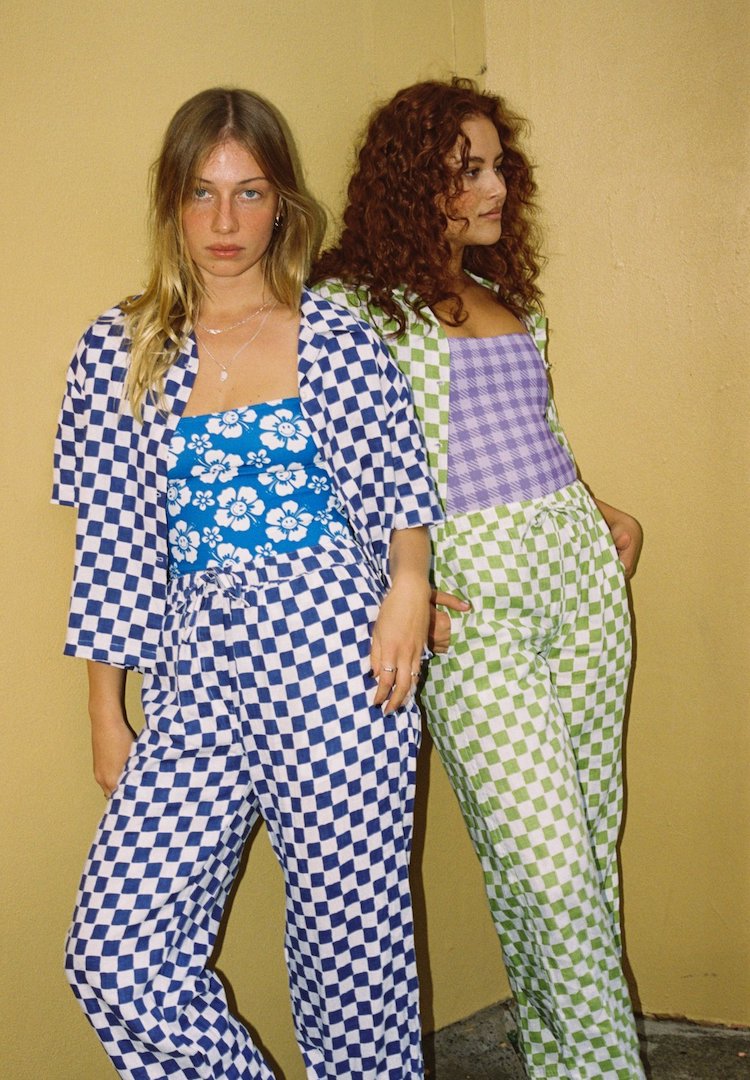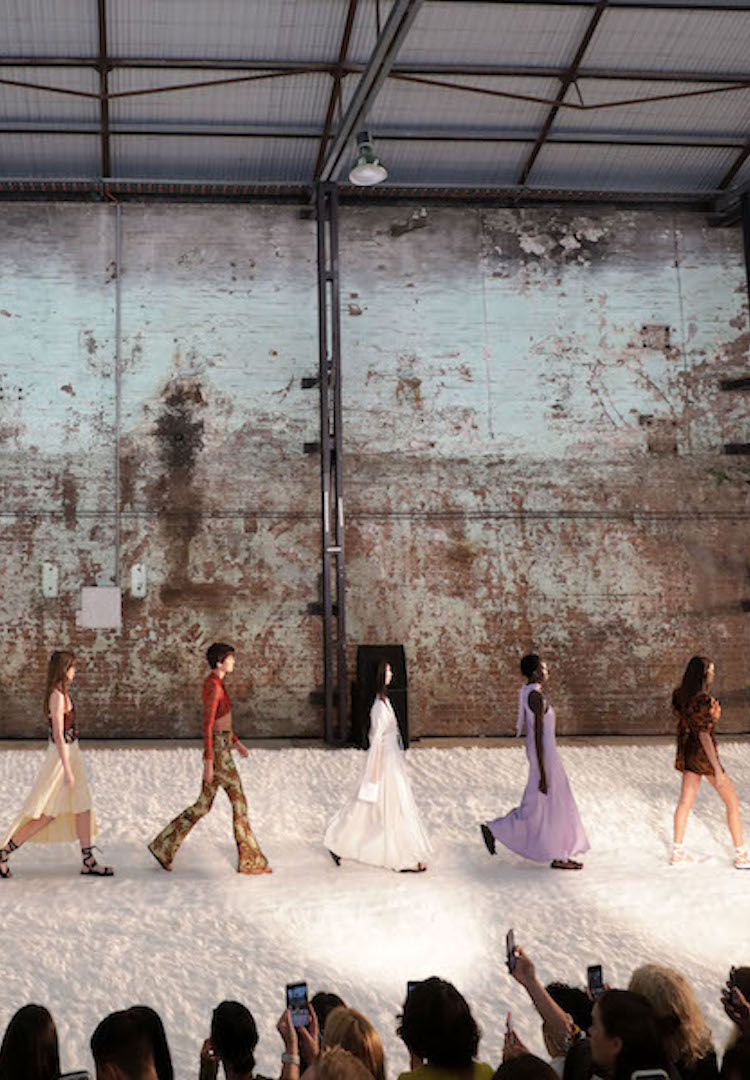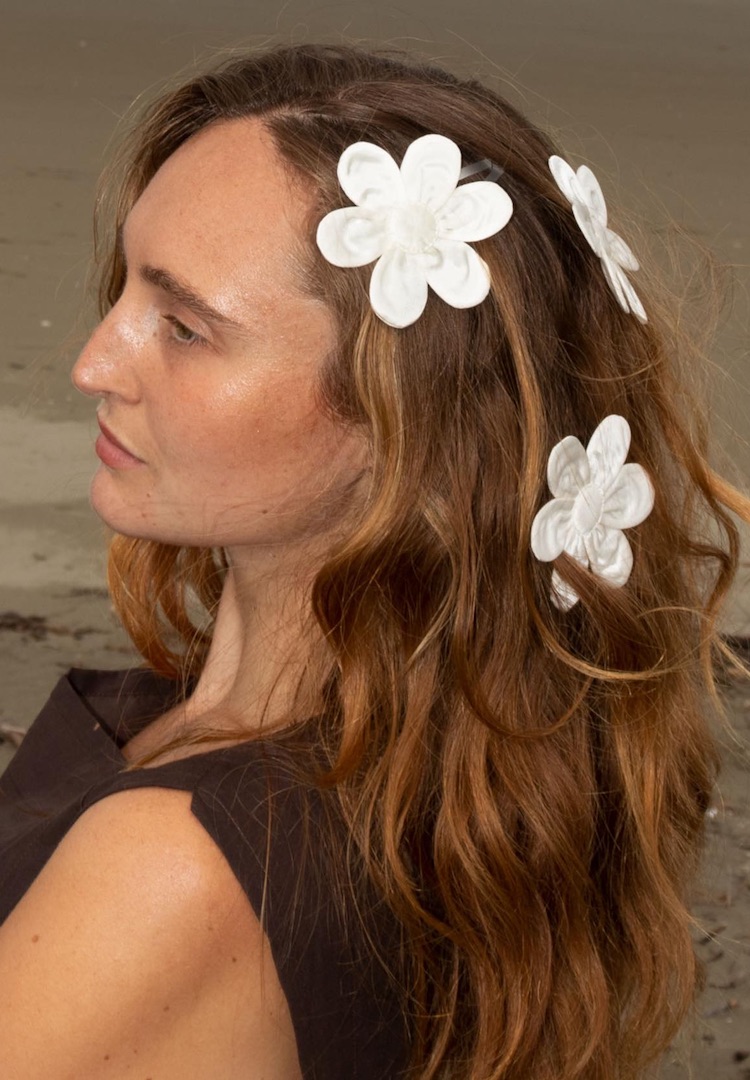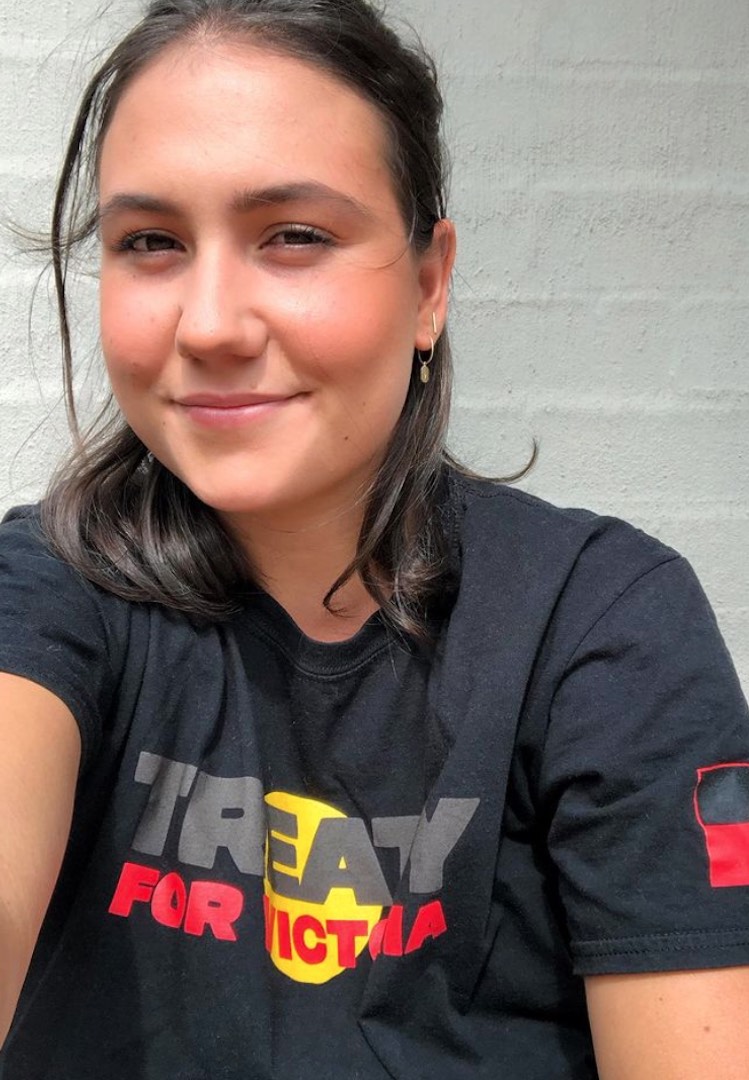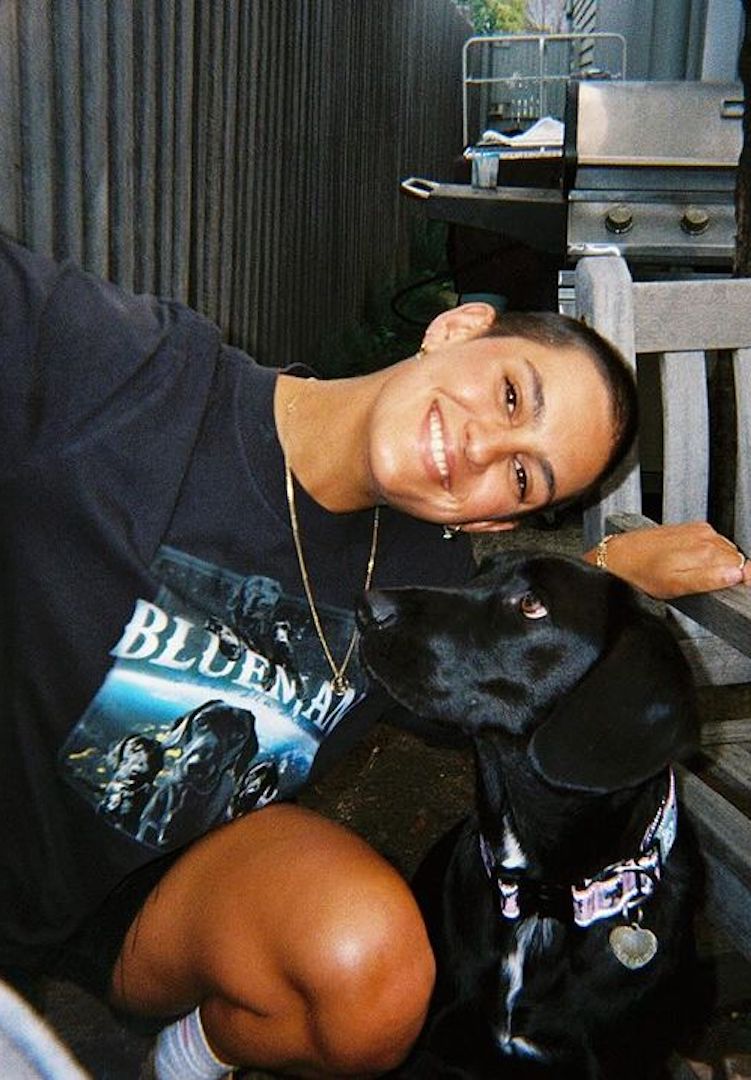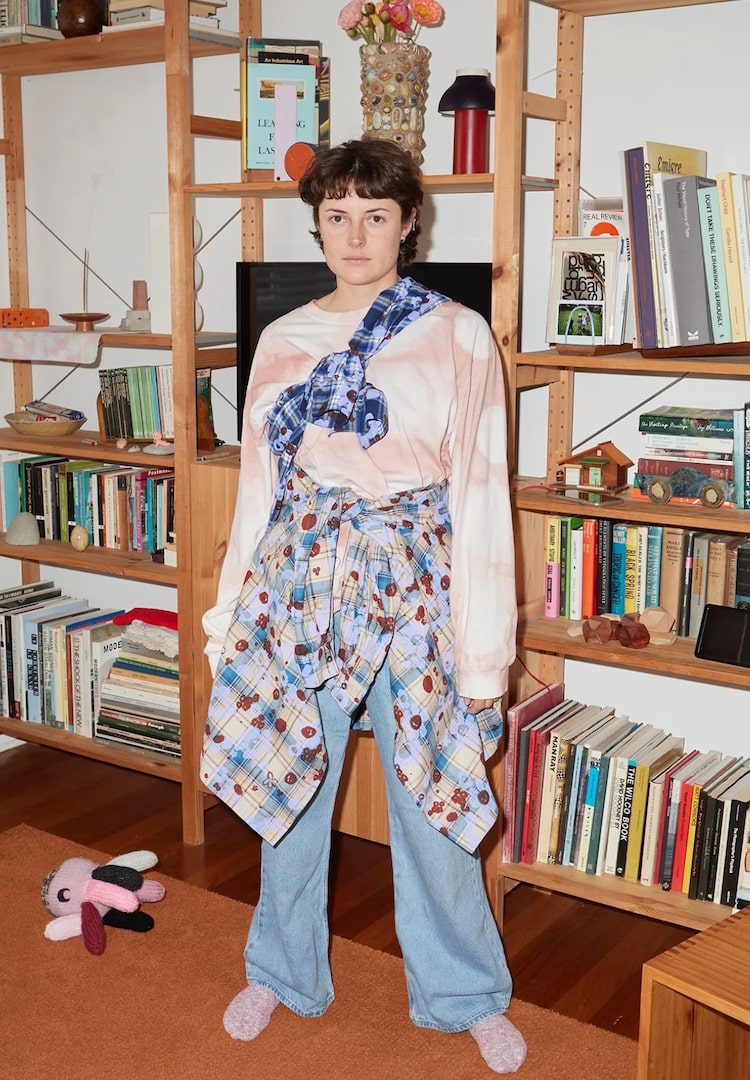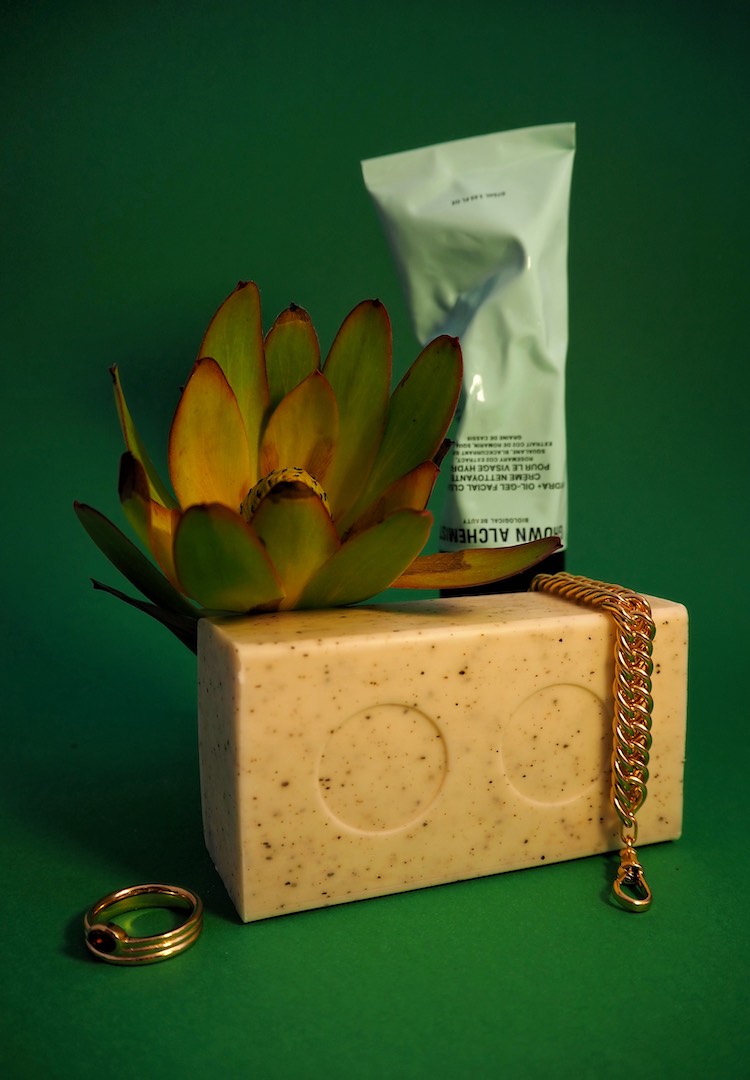What does it take to make an ‘it’ brand? I asked 3 viral Australian labels
IMAGE VIA HOLIDAY THE LABEL
WORDS BY RACHAEL AKHIDENOR
What Holiday the Label, Fluff Cosmetics and Clothing the Gaps have to say about it.
You know those brands you see once and suddenly, they’re everywhere? The ones everyone can’t seem to stop talking about – friends, acquaintances, magazines and the like. The ones that appear to have this magical grip on the world. The ones that create and shape culture.
‘It’ brands, they’re called. They’re mystical unicorn brands. The kind that are so original, so captivating and so seemingly necessary, you wonder how they haven’t existed until now.
Learn more about the ins and outs of business by checking out our Life vertical.
Obtaining ‘it’ brand status is no small feat. There is an abundance of brands out there. In fact, even that’s an understatement. With markets so crowded and social media so saturated, to attract the attention of consumers for more than a few minutes is itself an incredible achievement, let alone connecting deeply to consumers’ hearts and minds in the way ‘it’ brands seem to do.
It’s never been easier to start a brand. But building an ‘it’ brand? In my opinion, it’s never been more difficult. Just like the ‘it’ brands of the past decade (think Frank Body, Réalisation Par, Go-To Skin Care), the ‘it’ brands of today will leave an indelible mark on how brands will exist in the future. That is, they are revolutionary, innovative and original. A tall order given the high degree of unoriginality that exists in the world today.
Because the art of a good brand is in making the impossible look effortless, we as consumers are often entirely oblivious as to the endless hours of strategy, thought and dedication that goes into building them. This seeming effortlessness can lull us into a false sense of trust. It looks simple. Easy, even.
But if personal experience has told me anything, ‘it’ brands don’t just happen. They are meticulously crafted, a laborious exercise in dedication, discipline and (at times) obsession. They are built upon the unyielding passion of individuals with a desire to birth an original concept in the world.
As someone who has founded and runs a brand of my own, I was curious to learn more. And who better to learn from than those at the helm of the Australian ‘it’ brands of, perhaps, this decade. These three women run brands that are revolutionising their own respective industries.
For those wanting to start a brand or those intrigued by what it takes to build an ‘it’ brand, here are the thoughts and advice from three of Australia’s best.
Emma Mulholland, Founder and Designer of Holiday the Label
View this post on Instagram
What do you think it takes to be an ‘it’ brand in 2021?
It’s an interesting time in fashion, with a lot out there and so many new brands. It definitely feels like it’s the street and leisurewear brands’ time to shine. I think having something instantly recognisable with a cult following makes you an ‘it’ brand.
What advice would you give to people starting out or wanting to start a brand?
Make sure you spend time interning and experiencing the industry first. I feel like people are in a rush these days to dive right in without seeing if it’s right for them. It’s not as glamorous as you might think.
What did you wish you knew before starting your brand?
How much time I’d spend on a computer!
What would you attribute the success of your brand to?
Taking the time to develop and focus on smaller ranges, rather than trying to do a huge range of styles. And also cutting out ‘seasonal’ collections. We started off with three pieces for our first collection and grew it organically from there. We still have our core styles. If I am going to introduce something, I always make sure to get it sampled in my size so I can take it for a road test first, to fix up any fit or fabrication issues.
Erika Geraerts, Founder of Fluff Casual Cosmetics
View this post on Instagram
What do you think it takes to be an ‘it’ brand in 2021?
Depending on your definition of ‘it’, I believe the brands having the most resonance right now are those with high integrity, innovation and initiative. It is incredibly easy to start a brand in 2021, but incredibly difficult to scale one. The barriers to entry are few, while genuine connection, engagement and retention rely on more than just an appealing aesthetic and interesting product. Brands that are interested in their customers and responding to their ever-evolving wants and needs, while adapting to the platforms on which consumers are engaging with one another, are the most likely to succeed over a sustained period of time.
What mistakes do you think people commonly make when it comes to building a brand in this modern era?
There is a formula for Instagram success that relies on shortcuts and trends, yet lacks authenticity and longevity. The quickest way to derail your business is to stop listening to your customers.
What advice would you give to people starting out or wanting to start a brand?
Understand the market. Does your product or brand already exist? Maybe you should work for that company instead. Truly get to know your customer. What problem are you trying to solve? Start small and iterate, but don’t cut corners. Slower is faster.
What did you wish you knew before starting your brand?
I wish I knew or remembered that the most fulfilling work happens behind the scenes – and to focus on that. Also, to invest in a product pipeline over everything else.
What would you attribute the success of your brand to?
Customer intimacy, product design, brand and founder transparency. When our customers wanted refillable, vegan skincare and cosmetics, no single-use plastic packaging, no palm oil, and brand advocacy for what matters, we listened and we responded with action. And where we couldn’t yet act, we committed to change over time.
Sianna Catullo, Chief Creative Officer of Clothing the Gaps
View this post on Instagram
What do you think it takes to be an ‘it’ brand in 2021?
Passion and purpose! Retail took a big hit last year during COVID, but brands with a bigger purpose other than to sell and profit thrived. Brands like ours, a social enterprise with the purpose of adding years to Aboriginal people’s lives. We are authentic in our approach and on social media, and we’re transparent.
I think transparency is key to building an audience that [is] loyal and continues to support you over the years. We want our customers to know the people behind the brand and our stories, and to feel connected.
We think ‘community’ and ‘family’, not ‘consumers’. Every single person who purchases from us is part of a movement to spark important conversations in their own circles of influence, to create social change. We celebrate and elevate our community by featuring them on our social media platforms and our in-house photoshoots, to take them on our journey with us.
What mistakes do you think people commonly make when it comes to building a brand in this modern era?
A common mistake when building a brand is that people are in it for profit. Fashion is competitive and there are big established brands with a lot of money and resources. To establish yourself you need a point of difference, you need to exist for more than to just dress someone.
It is hard work. Being passionate about the brand and its impact will keep you motivated to keep working hard and succeeding.
Society is a lot more conscious about how they spend their cash. People are thinking about ethical clothing and the impact clothing has on the environment. Brands need to take this into consideration when designing, developing and distributing.
What advice would you give to people wanting to start a brand?
Teamwork is key. When you have a team who is passionate about the work, there to support each other and carry the load, the job is a lot more enjoyable. The team doesn’t always need to be people you employ, it can be your friends and family. You need people who can provide honest, critical feedback and be there to bounce ideas off, execute things and debrief with. This will help the growth of the brand and your own physical, mental and spiritual wellbeing.
What did you wish you knew before going into your role?
We had no idea we would end up in retail and fashion. The team at CTG is made up of health professionals. None of us have any retail, business, design, fashion, marketing or textile experience. However, not having this experience has made us appreciate the team, success and journey so much more.
We have trusted our instincts along the way and used our platform to have a voice, speak out and advocate for Indigenous community and causes. We didn’t realise the political power of fashion until our campaign to #FreeTheFlag. We created a Free The Flag campaign tee after we received a cease and desist for using our Aboriginal Flag which we discovered is copyrighted. This tee sparks conversations all over Australia and has been worn by all the teams in the AFL and AFLW Indigenous rounds.
What are some key factors that you believe are the bedrock of Clothing The Gaps’ success?
Some key factors include passion, transparency and teamwork. Merch with a message is not new for Indigenous community. We have been campaigning with fashion for decades. What’s new, however, is that a growing number of non-Indigenous allies are also wearing these clothes in support of Indigenous issues at rallies as well as every day. Our ally and mob-only symbols have given people confidence to purchase from us and our educational content ensures that people are informed.
Our brand values are to educate, advocate, elevate and celebrate and these values guide and direct our work. When we are unsure about anything in business or fashion, we revisit our values and see if the next move or decision we make is aligned.
We are the first Aboriginal business to receive Ethical Clothing Australia accreditation and we believe our focus on producing clothing locally and ethically is appreciated and respected by those that wear our clothes.
And finally, the fact we are an Aboriginal social enterprise makes people feel good about spending money with us because we are profit for purpose.
Keep your finger on the fashion pulse by following under-the-radar fashion brands set to take off this year.


